
Soil Associations
0541a MILFORD
Soil and site characteristics
Well drained fine loamy reddish soils over rock. Some steep slopes.
Geology
Devonian sandstone, siltstone mudstone and slate
Cropping and Land Use
Dairying, some cereals and early potatoes in Dyfed; stock rearing in uplands; coniferous woodland on steep slopes.
Component soil series
| Subgroup | Series name | Percentage | WRB 2006 link |
|---|---|---|---|
| 5.41 | MILFORD | 60% | Eutric Chromic Endoleptic Cambisols |
| 6.11 | WHITCOTT | 15% | Eutric Chromic Endoleptic Cambisols |
| 5.42 | LLANGENDEIRNE | 10% | Eutric Endostagnic Cambisols |
| 5.41 | NEWBIGGIN | 10% | Eutric Chromic Cambisols |
Covers 1377 km2 in England and Wales
Soilscapes Classification
| 6 |
Freely draining slightly acid loamy soils |
0541a MILFORD
Detailed Description
The Milford association is mapped over 1,345 km² of the Old Red Sandstone outcrop in south Wales, the Welsh Borderland, Devon and Somerset. It consists mainly of reddish fine loamy typical brown earths on interbedded siltstone, sandstone and mudstone, on gently sloping arable lowland in south-west Dyfed to steep slopes up to around 400 m O.D. In the Milford series the topsoil and subsoil are a reddish brown stony clay loam with granular or fine subangular blocky structure over very stony Head or bedrock at 40 to 80 cm depth. On steep slopes, especially above 150 m O.D. typical brown podzolic soils (Whitcott series) are common. They are distinguished from the Milford soils by a bright yellowish red subsoil, but are otherwise similar. Soils in thick drift occupy a small part of the association usually on footslopes. These are either well drained typical brown earths (Newbiggin series) or stagnogleyic brown earths (Llangendeirne series) which are subject to periodic waterlogging and have some subsoil gleying. In small rushy depressions and flushes there are cambic stagnogley soils (Fforest series) but these are rare. Shallow brown rankers (Powys series) occur on some narrow ridges and plateaux. All the soils contain stones but most are only slightly stony in the upper 40 cm, small and medium sandstones being commonest. The Milford association is the most extensive over the Old Red Sandstone outcrop of south Wales. It includes land on the precipitous scarp of the Brecon Beacons where the proportions of Whitcott series and bare rock are greatest. Here too the shallow Newtondale soils are found. Downslope, the association typically passes to the Fforest association of cambic stagnogley soils in drift, the boundary usually being a concave break of slope with a rapid transition to wet, rushy pasture. Upslope, above about 400 m O.D., Milford soils give way to the Lydcott association of stagnopodzols, the boundary usually marked by a change from bent-fescue pasture and bracken to bilberry heath or Nardus grassland.
In South West England the Milford association is mapped over reddened Devonian slates, siltstones and fine sandstones. In South Devon it occurs between Totnes and Paignton and east of Kingsbridge. In west Somerset the soils overlie similar rocks, often close to red Permo-Triassic deposits, surrounding the Brendon Hills and on east Quantock. The soils also occupy a number of hills on the summit of the Mendip plateau and were formerly described as the Maesbury and Ellick series. Variations include soil thickness, degree of reddening and the presence or absence of a brightly coloured subsoil. Denbigh soils, found sporadically, are similar to Milford series but brown, and were previously mapped as the Highweek series in Devon with the reddish Milford soils described as a phase. Shallow brown rankers of the Powys series occur on brows and a few steep slopes, but most of the steep land has deeper brown podzolic soils of the Manod and Whitcott series. Narrow valley floors and hillside flushes carry small rush-covered patches of loamy hydromorphic soils of the Fforest series. Drier bottoms and footslopes have Newbiggin and Llangendeirne soils, some formerly mapped as Ellick series on the Mendips. East of Totnes, a few inclusions of calcareous soils are on scattered patches of limestone within the slate outcrop.
Soil Water Regime
The soils are well drained (Wetness Class I) and readily absorb winter rain which passes into the underlying permeable Head, though locally there is some surface run-off on steep slopes. Reserves of moisture in all but the shallowest profiles are sufficient to prevent summer droughtiness in west Somerset, particularly in areas close to Exmoor. In the drier climate of south Devon the soils are slightly droughty for most crops.
Cropping and Land Use
The annual rainfall increases from around 1,000 mm in the lowlands of south-west Dyfed and Gwent to over 1,500 mm in the uplands of south-east Dyfed and south Powys. In the latter areas most land is permanent grassland and the farming system is based on livestock rearing with beef cows and hill sheep. Here arable crops are grown entirely for forage. In this difficult climate, Milford soils form the best land, being well-drained with a low poaching risk. Most of the grassland has been improved except on slopes greater than 15 degrees where there is usually bent-fescue pasture which is of good grazing value except where bracken infestation is heavy. The proportion of short-term grass and arable is greatest west of Carmarthen and in Gwent where the climate is drier and dairying the main activity. Some barley is grown. Where slope permits, Milford soils present few problems for cultivation and the only serious limitation is the wet climate, reflected in the long field capacity period of around 225 days. The winter work period is therefore short with little or no opportunity for spring cultivation in most years, autumn providing the greater number of days when cultivation is possible without soil damage. Reserves of available water in most soil profiles are more than 100 mm, so that east of Milford Haven, where moisture deficits are less than 90 mm, droughtiness is not a problem in most years. Milford soils are droughty only in the lowlands of the extreme west and south-east where deficits are highest or where they are shallow. In the west, the mild climate favours early potato growing. February cultivations required for early potatoes damage the soil and reduce yields if the land is too wet, but near the coast, full advantage is taken of the short rain-free periods when mild temperatures and strong winds assist in drying the soil rapidly. Damage to soil structure by the early cultivations is lessened by using grass in rotation. Broccoli is also grown over winter. Small areas of the association, usually steep slopes, are under forestry or old sessile oak woodland.
Mixed farming predominates on these soils in south Devon where the mild coastal climate gives a long growing season. Most of the land is below 150 m O.D., has an average annual rainfall of 1,000 to 1,200 mm, and about 225 field capacity days. With their good structure the soils dry rapidly to below field capacity and so can be worked to a seedbed only a day or two after a wet period. Both winter and spring cereals are grown, though autumn offers a longer landwork period without risk of damage to soil structure. There is some potato production and a little soft fruit is grown on sheltered ground with a favourable southerly aspect. Dairying is an important grassland enterprise. Though slight droughtiness can reduce grass yields in summer, this is compensated by the long growing season which allows grazing throughout the autumn except immediately after heavy rain. In west Somerset the climate is less favourable than in Devon for arable crops so there is more grassland, with stock rearing as the major activity. Here the annual rainfall rises to 1,500 mm on the lower slopes of Dunkery Hill, where land rises to over 300 m O.D. Most of the grassland is permanent but there are some leys and arable breaks, mainly for fodder crops, and a few winter cereals are grown in drier eastern parts. There is much steep land, particularly near Wiveliscombe, which is mainly under rough grazing with bracken and gorse. Some slopes carry deciduous woods though these are gradually being replaced by conifers, particularly Japanese larch and Douglas fir, which grow well on sheltered valley sides.
0541a MILFORD
Distribution Map
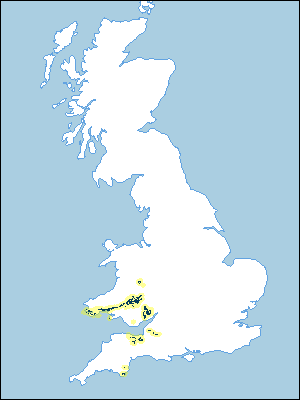 |
Note that the yellow shading represents a buffer to highlight the location of very small areas of the association.
Keys to component soil series
South Western Region
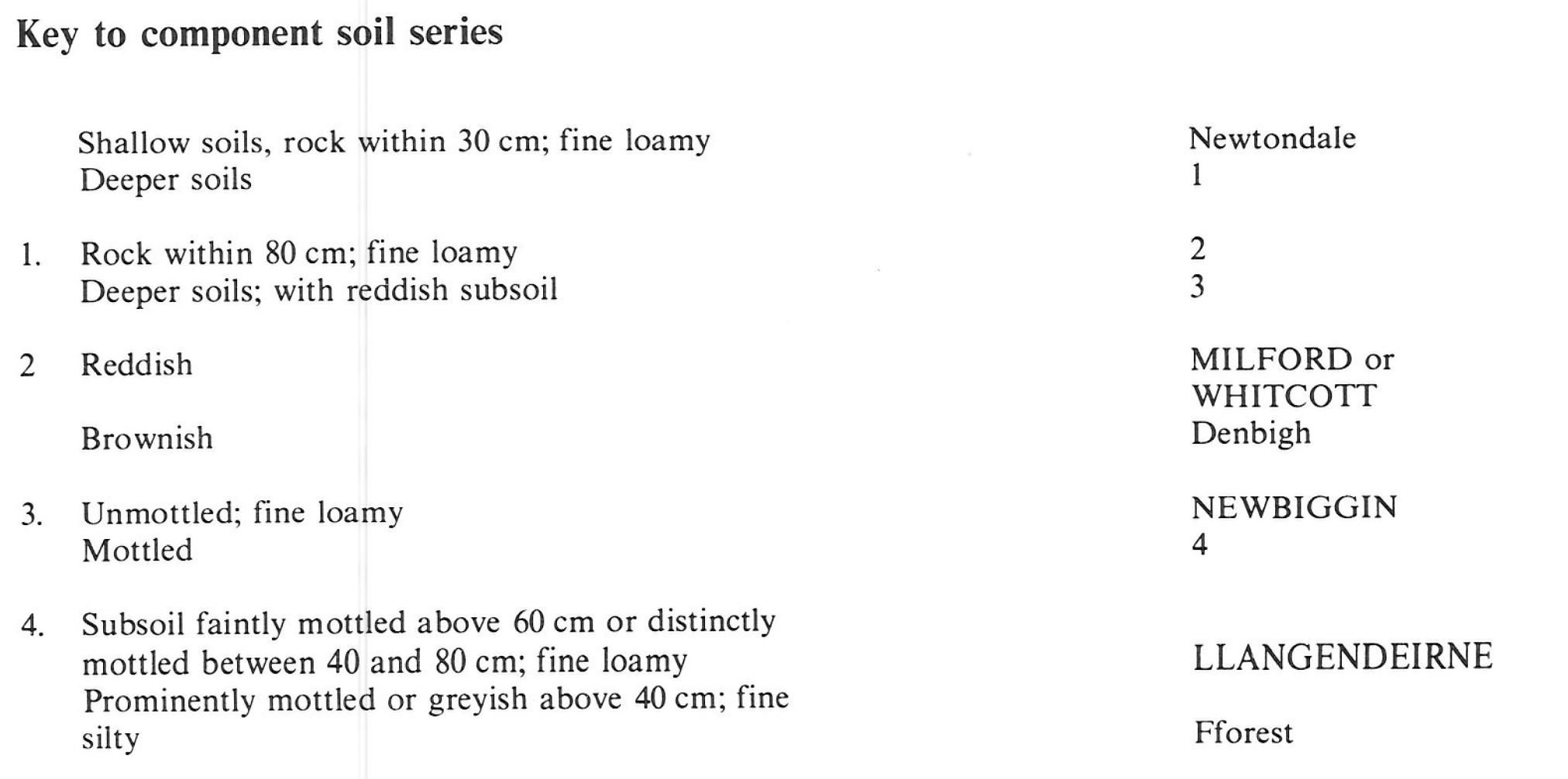 |
Wales
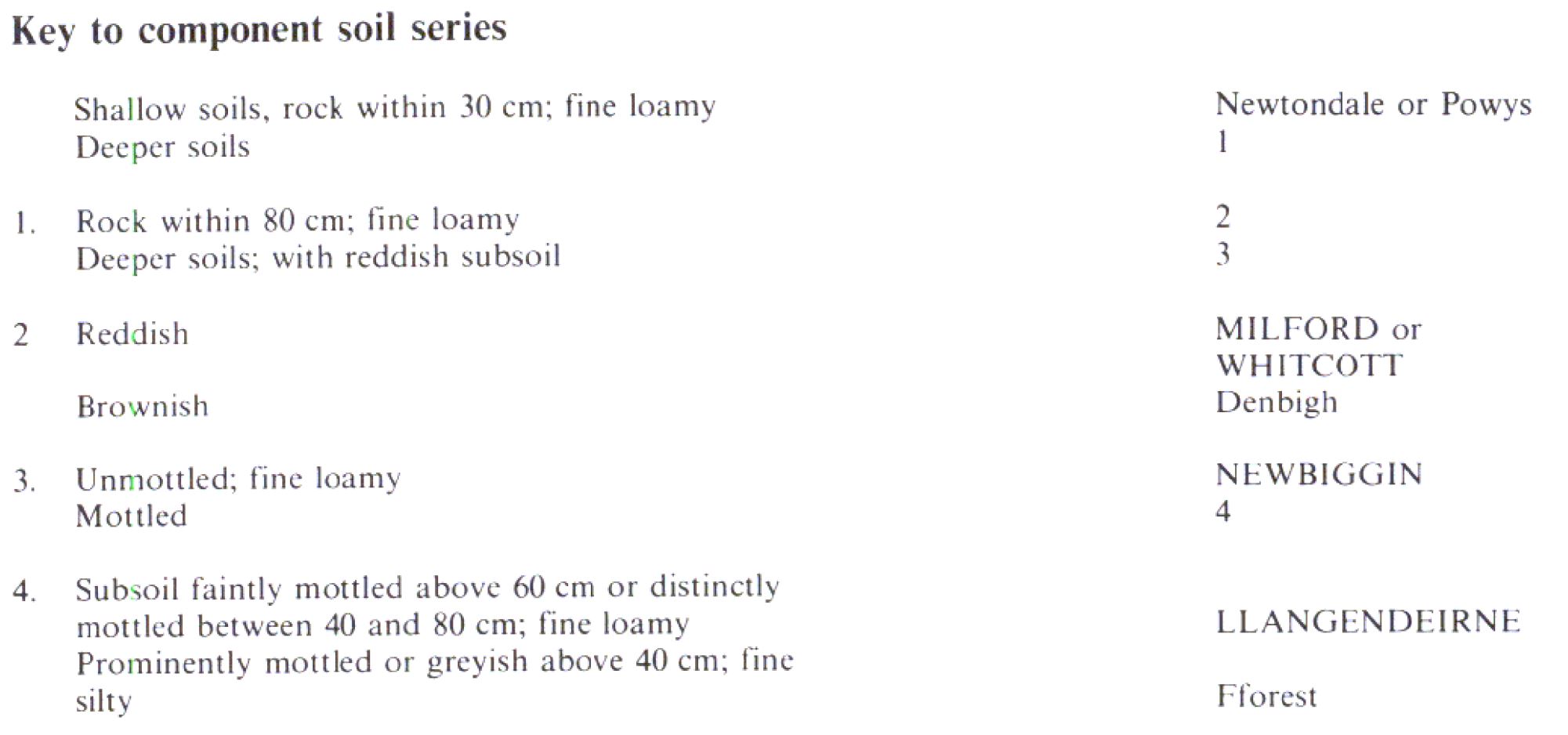 |
Typical Landscapes
South Western Region
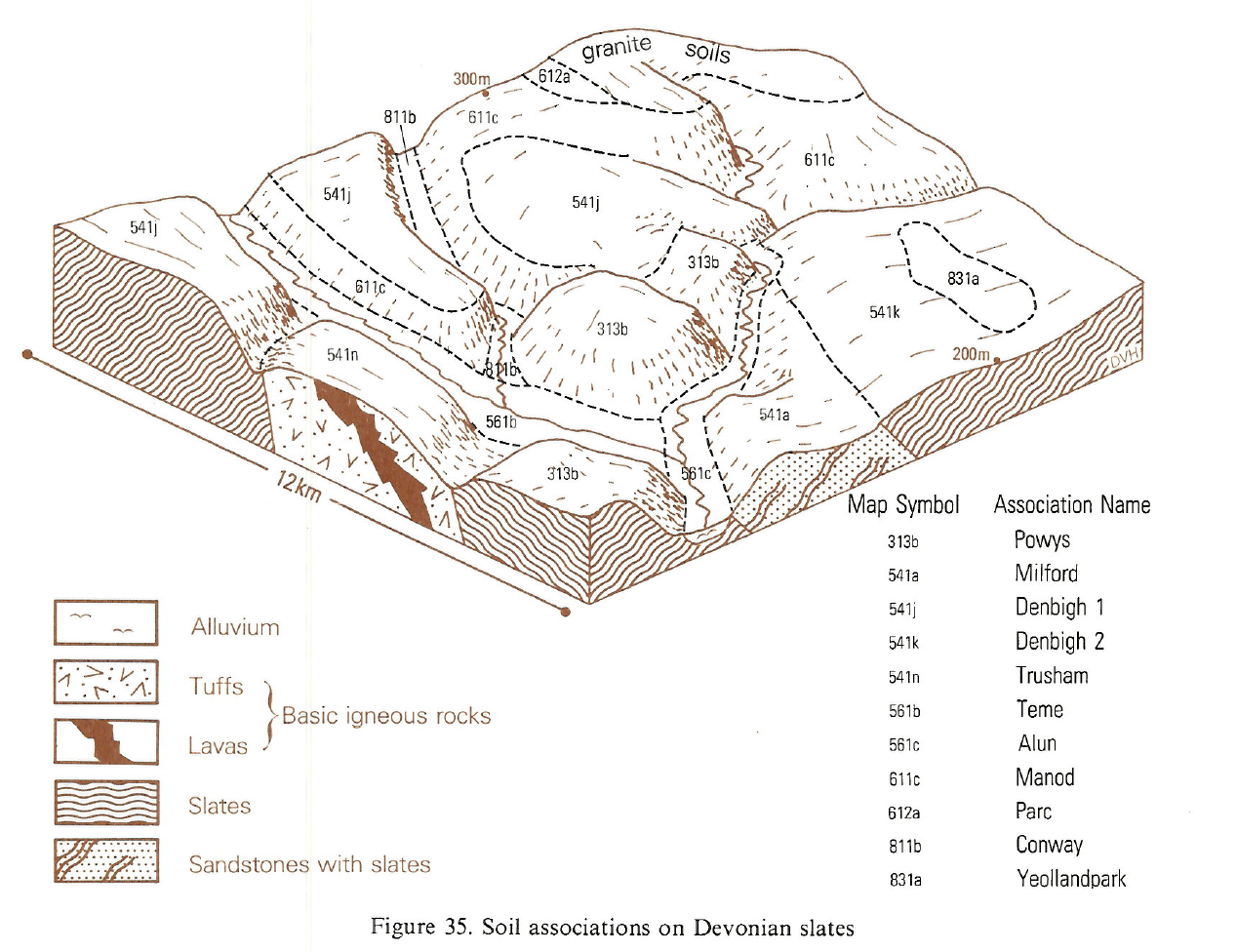 |
Wales
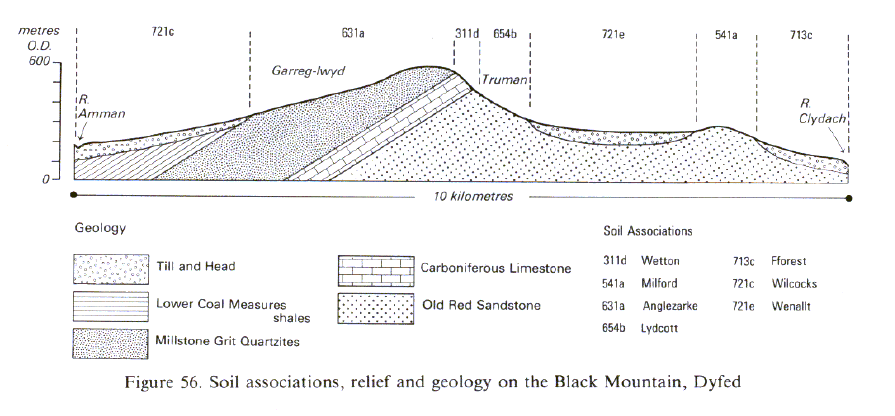 |
Wales
Wales
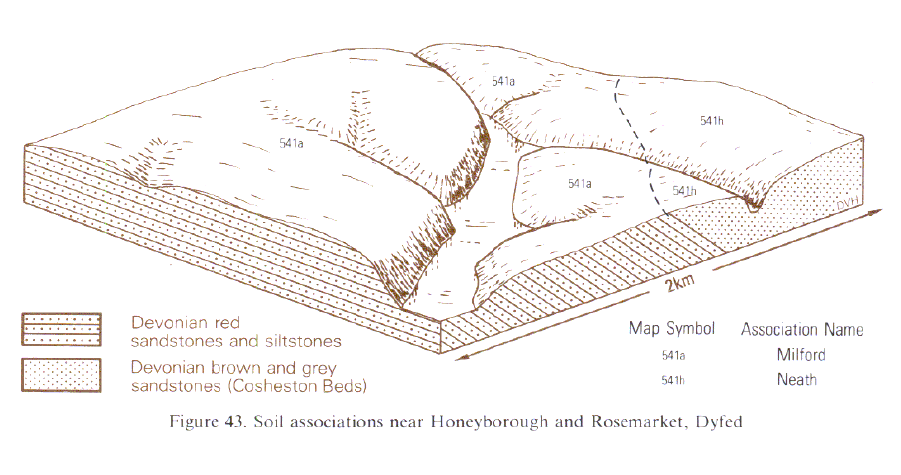 |
Wales
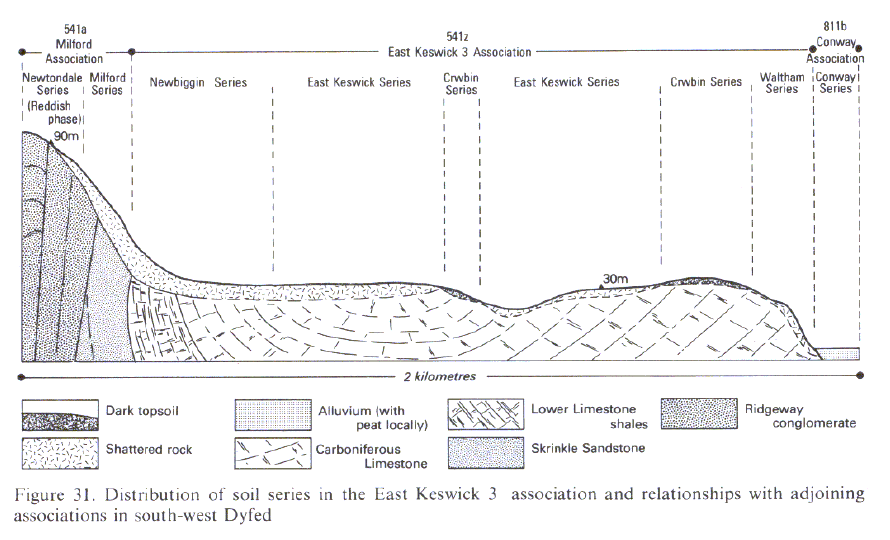 |
All information Copyright, Cranfield University © 2025
Citation: To use information from this web resource in your work, please cite this as follows:
Cranfield University 2025. The Soils Guide. Available: www.landis.org.uk. Cranfield University, UK. Last accessed 26/04/2025
